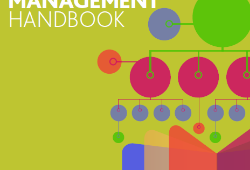Agile trading systems are key to market differentiation, but rather than following the well-trodden path of building proprietary systems, firms are beginning to favour a buy-and-build approach that not only meets immediate needs, but also accommodates rapid development to meet evolving trading and customer requirements.
Hosting an A-Team Group webinar entitled How to Create an Agile Trading System, editor-in-chief Andrew Delaney discussed the components of agile trading systems and the drivers behind their development with experts Jonas Hansbo, CEO at Tbricks, and Wolfgang Eholzer, head of department, Trading IT, at Eurex. Hansbo co-founded Tbricks in 2008 with a focus on adding agility to trading systems, while Eholzer supported last year’s introduction of the agile, yet robust, T7 trading platform at Eurex Exchange.
Delaney set the scene for discussion noting that speed alone is no longer enough to differentiate a trading system and that many firms are re-evaluating their systems in an attempt to differentiate service offerings. Firms must also take into account regulations, such as MiFID II and the SEC Market Access Rule, that increase the regulatory burden in the trading environment, and build out greater functionality to fulfil a growing need for pre-trade analytics, risk controls and post-trade clearing intelligence. Combining these requirements, Delaney proposed the need for agile trading systems based on a buy-and-build model that can respond rapidly to client requests and market opportunities, and can be developed despite limited resources.
Considering the question of how value can be added to trading platforms, Hansbo said: “Customers still want speed and it is a focus for us, but they also want functionality out of the box that is robust and fulfils the business case. They also want potential to change this functionality to add value. The holy grail is to be able to add new venues and connectivity to new markets, and implement new trading ideas rapidly on existing, licensed platforms.”
Eholzer described a trade-off between making easy and hard changes to a trading platform. He explained: “With the T7 Eurex platform we decided it was more important to put standard TCP/IP sockets on the outside as everyone knows how to use them, but internally we used InfiniBand. Balance is important as business wants a short time to market, but also the ability to scale and have several people working on new functionality at the same time. If you can stay in the apps space and not change the design principles of the platform this is good as it is much harder to change the platform.”
Picking up on this point, Hansbo added: “The ideal trading system allows new features to be delivered quickly to the platform, this is the concept of agility.”
Turning to the issue of regulation, Delaney noted the requirement of the German High Frequency Trading Act for firms to flag algorithmically generated orders, and asked how changes such as this can be supported by an agile trading platform. Hansbo answered: “If a platform is very agile, changes can be made in different ways to suit different customers. We discussed with our customers how best to implement this
regulation and solved the problem for each one in an elegant way and in time to meet a tight regulatory deadline.”
Looking forward to next-generation trading systems with a focus not only on speed, but also on more functionality, Hansbo said: “The market has changed. To build a good, traditional system has become very expensive, so it is more attractive to buy a platform that you can build on. Heads of trading used to decide on new platforms, but we now talk to many stakeholders including IT, trading desks and the business.”
Providing an example of how agile trading systems are being developed, Eholzer explained: “We took a buy-and-build approach. We built the Eurex T7 platform with the exception of the database and operating system, and we also bought the messaging middleware. Where there were good generic products in the market we bought them, and where we could gain an edge by using our own knowledge we developed in-house solutions. So far, this approach has paid off.”
Continuing the buy-and-built theme, Hansbo said some of the trading apps in the library on the Tbricks platform have been developed by the company, while others are open source and more are built by customers who have access to Tbrick’s source code under software licensing agreements.
Concluding the webinar, Delaney asked the panel participants what customers can expect next from their trading platforms. Eholzer said Eurex would introduce a new release of T7 towards the end of November, which will be faster and add capacity for trading and risk management. It will also include enhancements designed to improve the integrity of the market. Hansbo said that after spending eight years engineering the Tbricks platform, the company will next year set aside some technical time to focus on its speed and flexibility, open up more application programming interfaces and deliver more functionality at the application layer.
To find out more about how to build an agile trading system, download a free A-Team Group White Paper sponsored by Tbricks here.
Subscribe to our newsletter





